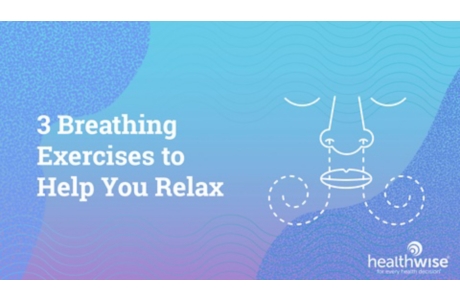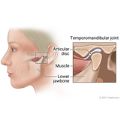Condition Basics
What are temporomandibular disorders (TMDs)?
Temporomandibular disorders (TMDs) are problems with jaw movement and pain in and around the jaw joints. This can cause pain when you talk, chew, swallow, yawn, or do other movements with your mouth or jaw. TMDs are also called TMJ or TM problems.
What causes them?
TMDs are often caused by muscle tension. Clenching or grinding your teeth can tire the jaw muscles, leading to muscle spasms, tissue damage, pain, and sore muscles. A TMD can also start with an injury to the jaw joint or a joint disease like osteoarthritis or rheumatoid arthritis.
What are the symptoms?
TMDs can affect the jaw and jaw joint as well as muscles in the face, shoulder, head, and neck. Common symptoms include joint pain in the face, muscle pain in the face, earaches, headaches, joint sounds, trouble with fully opening the mouth, and the jaw locking.
How are they diagnosed?
Your doctor may do a physical exam and ask questions about your health. An X-ray, CT scan, or MRI may also be done. These tests can help check for bone or soft tissue problems related to symptoms of a TMD.
How are TMDs treated?
The focus of TMD treatment is to ease pain in the jaw joint and restore normal jaw movement. Initial treatment involves over-the-counter pain medicine and self-care at home. Splints can help reduce teeth grinding and clenching. Your doctor may suggest other treatments as well. Surgery isn't usually done to treat TMDs.
Health Tools
Health Tools help you make wise health decisions or take action to improve your health.
Prevention
Here are some ways you can reduce muscle tightness.
- Try relaxation techniques.
These may include taking slow, deep breaths and doing mindfulness meditation. Other practices, including progressive muscle relaxation, yoga, tai chi, and qi gong, may help.
- Learn to recognize when you're clenching your teeth.
Practice keeping your teeth apart. Bring them together only when swallowing or eating.
- Try not to overuse your jaw muscles.
Avoid chewing gum, biting your nails, or resting your chin on your hand.
- Eat different foods.
Try foods that are softer. Avoid hard or chewy foods, such as popcorn, apples, carrots, candy, hard breads, and bagels. Use both sides of your mouth to chew your food.
- Practice good posture.
This means that your ears, shoulders, and hips are in a straight line. Better posture may reduce pain by restoring the natural alignment of your facial bones and muscles.
Explore more
Watch
Symptoms
TMDs can affect the jaw and jaw joint as well as muscles in the face, shoulder, head, and neck. Common symptoms include:
- Joint and muscle pain in your face when you move your jaw.
- Pain when you chew, yawn, or open your mouth wide.
- Earaches.
- Headaches.
- Joint sounds, such as clicking and popping.
- Trouble with fully opening your mouth.
- Your jaw locking.
In most cases, symptoms are mild and don't last long. They tend to come and go without getting worse and usually go away without a doctor's care.
Some people may develop long-lasting (chronic) symptoms. Chronic pain or trouble moving the jaw may affect talking, eating, and swallowing.
What Happens
What happens when you have a TMD varies depending on the reason for the muscle tension.
A one-time overuse injury (such as holding your mouth open for a long time during a dental exam) may go away without treatment.
Ongoing (chronic) muscle tension (such as stress, a jaw injury, or grinding teeth during sleep) may be relieved by treatment. If chronic muscle tension isn't treated, it may change the joint structure over time or lead to osteoarthritis.
TMDs caused by problems in the structure of the jaw joint may respond well to early treatment. They may get worse without treatment.
Exams and Tests
Your doctor may do a physical exam and ask questions about your past health.
If you have sudden pain after a facial or jaw injury, your doctor may order an imaging test, such as an X-ray, a CT scan, or an MRI.
If you still have symptoms after the first period of treatment, your doctor may look for problems in the jaw joint structure.
Treatment Overview
The focus of treatment is to ease pain in the jaw joint and restore jaw movement. Using techniques to relax your muscles and manage stress may also help, such as cognitive behavior therapy and acupuncture.
Dental splints may be used. Splints are often pieces of plastic that fit between the upper and lower teeth. They help protect the teeth from grinding and clenching.
Physical therapy can help if your symptoms are caused by tight muscles. Physical therapy can help you stretch and release tight muscles and scar tissue.
Your doctor may suggest medicines. In some cases, the doctor may inject numbing medicine into the spot that hurts.
Most people don't need dental work or surgery. Surgery may be used if you have structural problems in your jaw joint.
Learn more
Self-Care
- Put an ice pack or a warm, moist cloth on your jaw for 15 minutes. Do this several times a day. Try switching back and forth between moist heat and cold.
- Ask your doctor if you can take an over-the-counter pain medicine, such as acetaminophen (Tylenol), ibuprofen (Advil, Motrin), or naproxen (Aleve). Be safe with medicines. Read and follow all instructions on the label.
- Choose softer foods, such as eggs, yogurt, soup, or pureed foods. Try to avoid hard foods. Cut food into small pieces.
- If it doesn't cause pain, practice relaxing your jaw. Gently open and close your mouth. Move your jaw straight up and down. Do this for a few minutes every morning and evening. Watching yourself in a mirror can help.
- Have good posture. Try to line up your ears, shoulders, and hips when sitting and standing.
- Learn to manage your stress. Try:
- Relaxation techniques. These may include taking slow, deep breaths, and mindful meditation. It may include progressive muscle relaxation, yoga, tai chi, and qi gong.
- Getting at least 30 minutes of exercise on most days to relieve stress. Try walking.
- Try not to:
- Hold a phone between your shoulder and your jaw.
- Open your mouth all the way, like when you sing loudly or yawn.
- Clench or grind your teeth, bite your lips, or chew your fingernails.
- Clench things between your teeth, such as pens, pipes, or cigars.
Learn more
Watch
Related Information
Credits
Current as of: August 6, 2023
Author: Healthwise Staff
Clinical Review Board
All Healthwise education is reviewed by a team that includes physicians, nurses, advanced practitioners, registered dieticians, and other healthcare professionals.
Current as of: August 6, 2023
Author: Healthwise Staff
Clinical Review Board
All Healthwise education is reviewed by a team that includes physicians, nurses, advanced practitioners, registered dieticians, and other healthcare professionals.






